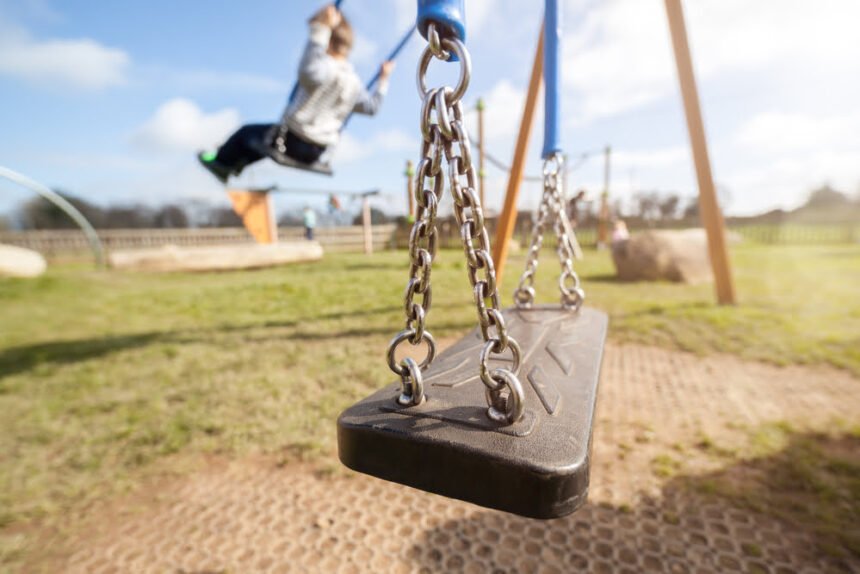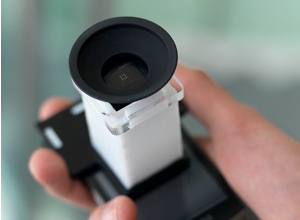The playground can be a great learning environment, as well as a place to fight childhood obesity. However, you need to make sure your children know how to stay safe there.
Teaching your children about safety is a very important part of their educational regimen. You have to consider all of the ways that they can get injured, which requires you to teach them proper safety strategies.
You have probably taught your children about the ways that they can get hurt around the house. However, there are also a number of other places where injuries can occur. One of the most common places is the playground.
Around 220,000 children are hospitalized in emergency rooms for playground accidents every year. Although not all of these injuries are preventable, many of them could have been avoided if kids were better taught how to stay safe on the playground.
Fortunately, you can help your kids learn on the playground without getting hurt. You just have to make sure they are taught properly safety tips.
Benefits of Helping Children Learn on the Playground
Would you like to help your pupils learn and play outdoors at the same time? There are lots of ways to accommodate learning in the playground to enhance the benefits of outdoor space.
If you’re working towards a more beneficial and creative playground and playtime for your educational facility, the following ideas might help you to get a head start on your plans:
A Growing Area
Children can learn all kinds of new skills when they are allowed supervised gardening time at school. This is why a growing area in the playground makes sense when it comes to boosting educational possibilities in that outdoor space.
Children can establish a connection with nature and the world around them, learn a sense of responsibility and pride, and one study even suggested that kids who take part in gardening veggies and fruit feel encouraged to eat healthier food. Gardening is also known to be very calming for children, which could help them to focus better when they return to the classroom after some digging and planting outside.
Facilitate Physical Education
An outdoor area, by rights, is an open space for kids to run around in, and they will naturally create their own games even if the space is blank. However, an outdoor space can encourage even more physical activity with additional layout features and decorations. For example: playground markings featuring a Daily Mile track can help the whole school run or walk their daily mile and help avoid obesity, something over a quarter of kids suffer with by the time they are 10-11 years old.
Traditional playground games markings like Hopscotch and Snakes and Ladders encourage movement like hopping and jumping, further aiding in muscle development and coordination – all while facilitating fun.
Courts and running track markers can also help support physical education lessons, sports days and competitions in a playground too, helping kids to gain a healthy attitude towards their physical health – an invaluable lesson that will help them thrive as they grow and move into adulthood.
Play Is Learning
Playing, in itself, is a vehicle for learning as it helps with social skills, creativity, imaginative play, emotional control and expression, coordination and more. Playing, and these kinds of benefits happen naturally in a playground already, however, certain things can encourage further educational benefits and learning.
Depending on the ages of the children, certain toys, apparatus and activity stations like sandpits, can all encourage play that develops different skills. Thermoplastic playground markings also encourage different kinds of play. Very young children, for example, benefit from colourful animal markings or mini beasts markings as a basis for play. Older children can benefit from playground markings like targets, letters, numbers and grids.
As pupils play and have fun, they’re naturally becoming more familiar with these shapes, characters, figures and games, which provide all kinds of learning benefits without them even being aware of it.
Offer Lessons Outside In Nature
Holding some lessons outside in nature is a great idea when it comes to educating kids, because the environment itself helps with enhancing overall mood, mental health and general emotional wellbeing. It is also known to provide cognitive benefits too.
Teachers can match the setting with curriculum based educational activities such as the creative use of letters or numbers marked on the playground. For example, a class about adding and subtracting may be done on number markings outdoors to help kids engage better, and to visualise the concept in a more immersive way than just seeing it on a whiteboard inside.
“You cannot make people learn. You can only provide the right conditions for learning to happen.” – Vince Gowmon
Any outdoor square footage for children to spend quality time in is invaluable, so it makes sense for it to be utilized as much as possible.
With the right apparatus, thermoplastic playground markings, planning and creativity, you can actively enhance your pupils’ outdoor time so that they can play and learn at the same time.
However… Safety is Essential!
While there are a lot of great reasons to encourage your children to learn on the playground, there are still some safety risks. You need to encourage them to follow these tips to stay safe when they are at the playground.
Use a Playground Report Card
You want to make sure your children understand there are consequences for failing to abide by safety rules. Wouldn’t it better to have those consequences come from you, rather than an injury?
Many experts suggest having a playground report card. You can rate your children on their playground safety and either impose penalties or rewards based on performance.
Require them to Dress Appropriately
Dressing appropriately is a very important part of staying safe at the playground. You should make sure that they don’t have anything that could be a strangulation hazard or cause them to trip. Scarves, necklaces and purses shouldn’t be used on playground equipment or while running.
Separate Older and Younger Kids
Kids of different ages play differently. Older kids can run faster and might accidentally knock younger kids over. You need to keep older and younger kids separate to avoid accidents.
Use Age Appropriate Equipment
You have to also make sure that children use age appropriate equipment to avoid getting hurt. See our guide on selecting it.
Kids Can Learn Well on the Playground But Need to Stay Safe
The playground isn’t just a place for having fun. It can also be a great place for kids to learn. However, it is also necessary to teach children proper safety guidelines.







